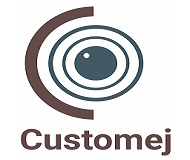Personal bankers are frequently required to submit a resume when applying for new positions. These documents list the candidate’s credentials and help hiring managers decide. Learning how to make a strongresume for banking if you’re a personal banker looking for work could be helpful.
An excellent resume should be personalized to meet the job you seek, just like a good suit should be made specifically for each wearer. On a resume for a bank audit certificate, as on any other sort of resume, many resume format and style elements are the same. The skill sets most important for working at a bank should be highlighted.
This list of guidelines for building a stellar banking resume has been put together so you can confidently apply for banking jobs!
Jobs in the banking and finance industry
- Financial Planner
- Financial Analyst
- Investor Relations Associate
- Budget Analyst
- Branch Banking Manager
- Branch Operations Manager
- Chartered Accountant
- Company Secretary
- Mergers and Acquisitions (M&A) Specialist
- Underwriter
- Risk Manager
- Portfolio Manager
- Banking Relationship Manager
- Investment Analyst
- Actuary
- Accountant
- Credit Analyst
- Economist
Formatting a Banking Resume
Banking is one of the most cutthroat industries in which you can work. As a result, you should follow through on what you say.
This entails crafting a resume for banking that stands out from the competitors or using a professional resume writing services.
But you must choose the right format before you start writing. A hiring manager having trouble reading the text won’t be impressed by even the most significant experience.
You might also give these two well-liked formats a shot:
Functional resumes are the finest resume formats for people with the necessary capabilities. Still, they lack much banking experience because they emphasize your banking abilities.
Combination resumes are ideal for people with relevant talents AND work experience in banking because they combine “Functional” and “Reverse-Chronological” forms.
Depending on your job level, how should your banking resume be formatted?
Utilize a resume format that is appropriate for the job you are going for by adhering to these rules:
Functional resumes are a wonderful option if you’re a first-time job seeker or lack professional experience because they place more emphasis on your job-related talents than your employment history. Subdivide your skills into specific categories, such as soft skills and banking skills.
Combination resume: As already said, this resume format, also known as a hybrid resume, is excellent for presenting a balance of both your job history and applicable talents. It is especially suitable for mid-level roles like a personal banker.
Chronological resume: If you have a strong work history and a steady career path in banking, adopt the chronological format for higher-level positions highlighting your best accomplishments and established work history.
You must select the appropriate resume layout after the format has been sorted.
The following layout is advised:
Margins: All sides should have one-inch margins.
Choose a distinctive, professional font for the text.
11–12 point font size for body text and 14–16 point for headers
Use only 1.0 or 1.15 as your line spacing.
Keep your resume to one page. If it’s difficult for you to fit everything on one page. Seek out assistance from resume writing services.
What to Put on a Resume for Banking
A banking resume’s primary sections are:
- Contact Information
- Work Experience
- Education
- Skills
Add these optional elements to your banking resume to make it stand out from the competition:
- Awards & Certification
- Languages
- Interests & Hobbies
How to include your contact details
Add your contact information to the document’s header after selecting your format.
In your banking resume, you should write your first and last names on the first line.
Add your phone number, email address, city, and state on a new line after that. You can also provide a link to your professional portfolio in this section if you have one.
Including your contact information is crucial so the hiring manager can contact you if they want to arrange an interview.
Use the following structure for your resume’s contact information section:
Your Name
Title – Create a title that is specific to the position you are applying for.
Phone number: Verify this several times. You see, even a small mistake might significantly harm your chances.
Email Address: Use a professional email address ([email protected]), NOT the one you made while you were in school.
Location (Optional): Are you applying for a job abroad? Mention where you are.
Make a professional synopsis.
After including your contact details, provide a concise, professional overview.
A professional summary is a few sentences outlining your credentials as a personal banker.
You may mention your degree of schooling, the number of years of experience, or any related talents. A professional summary can also define the kind of position you’re seeking or the value you can provide to the organization.
The main objective is to make a professional CV that sticks out.
But how is this carried out?
Using an effective introductory paragraph, of course!
There are two variations of these introductions: resume summaries and objectives.
Despite their modest differences, both of these opening sentences summarize your banking resume’s key features.
A summary and an objective are different from one another in that
A resume summary lists your most significant banking accomplishments and experiences. It is intended for people with extensive expertise in the finance business.
Describe your experience
Then, include any professional experience you have with personal banking. Including your experience may demonstrate that you are a qualified applicant with expertise in the banking sector.
Include the dates you held each post, starting with the most recent. Write the company’s name and location on the next line.
Use a bulleted list to list your responsibilities for your position after this information.
Describe your education
List your schooling after your professional experience. This area informs the employer of your professional experience and academic background in banking or a closely linked field.
To add your education, list the degree you obtained, the college or university where you attended, and the graduation year.
Use reverse chronological order to list your degrees if you have more than one.
Add a section on skills
Include a skills section to complete your resume. Any skills you possess pertinent to working as a personal banker are listed in the skills section. In this list, try to incorporate hard and soft skills. Hard skills are competencies you acquire through school or training. In contrast, soft skills are character traits you develop through time as a professional.
What are some useful skills you should include on a banking resume?
- Ability to work under pressure
- Attention to detail
- Interpersonal skills
- Financial planning
- Cash handling
- Risk assessment
- Financial analysis
- Debt and credit management
- Customer service
- Time management skills
- Problem-solving skills
- Investment management
- Strong analytical skills
- Computer skills
- Negotiation
- Proficiency in Microsoft Office
What other credentials and training are relevant for this field?
Your career can advance, and you can draw high-profile investors and clients looking for individuals with specific expertise and credentials by earning certifications and completing further job-related training. Some of the more beneficial certifications for banking are given below.
- Certified AML and Fraud Professional (CAFP)
- Certified Corporate Trust Specialist (CCTS)
- Certified Enterprise Risk Professional (CERP)
- Certified Financial Marketing Professional (CFMP)
- Certified IRA Services Professional (CISP)
- Certified Regulatory Compliance Manager (CRCM)
- Certified Retirement Services Professional (CRSP)
- Certified Securities Operations Professional (CSOP)
When you’re done, proofread your banking resume.
Your hiring process won’t advance if you make mistakes. After finishing your CV, run it through spell check to spot any obvious mistakes. Next, proofread everything two or three times to find any other errors.
Watch out for words like “complaint” and “compliant,” for instance, which are written correctly but the incorrect choice of word.
Boost SEO and brand awareness with fast-approved, high-quality guest post websites. Niche-targeted placements that improve your site’s visibility and organic traffic quickly.
Ask a friend or a member of your family to read through your resume because they might find errors you missed.
To make your resume stand out and land the interview you’re hoping for, tubemambo.com consider hiring a resume writing service In Chennai




